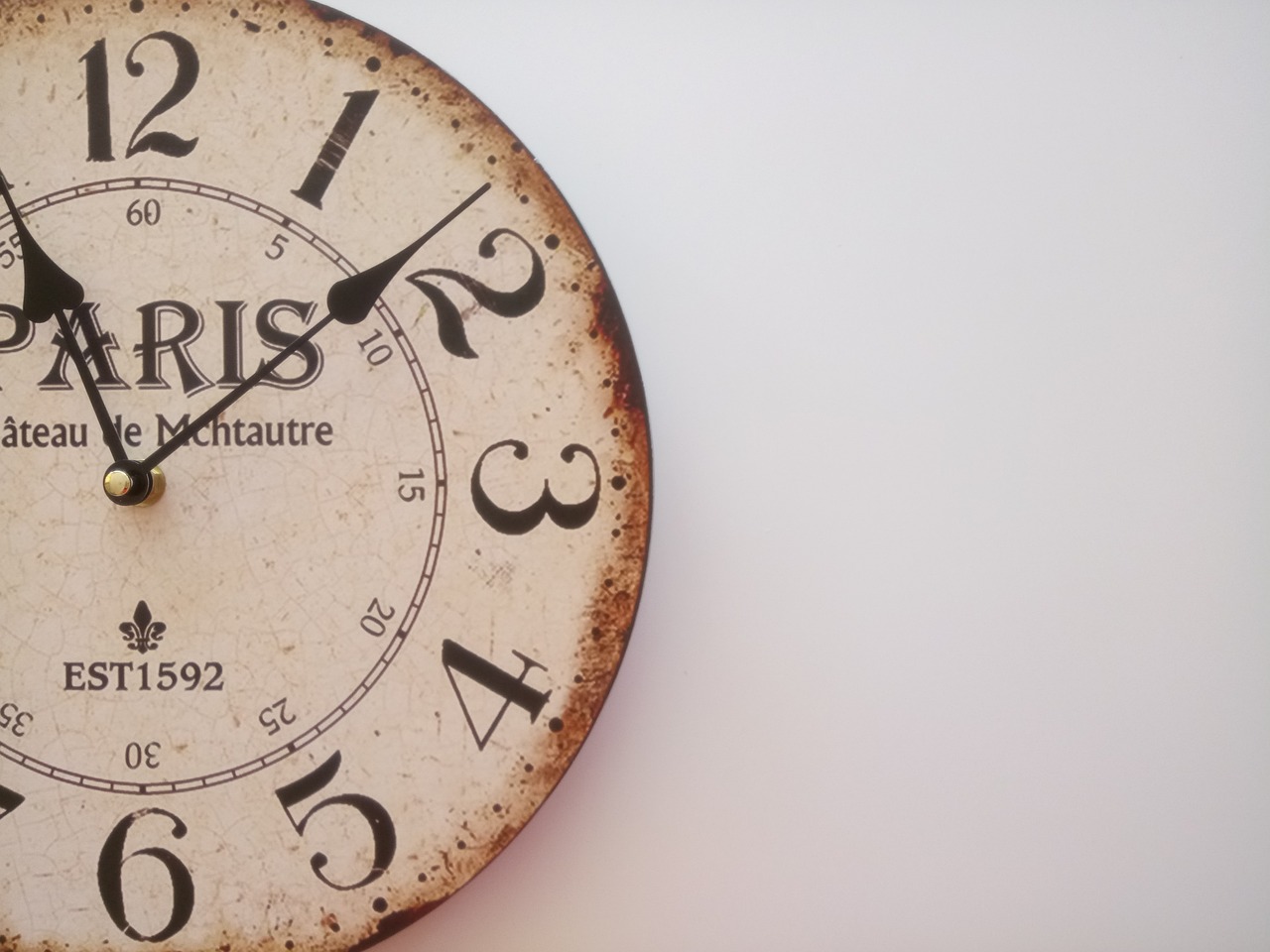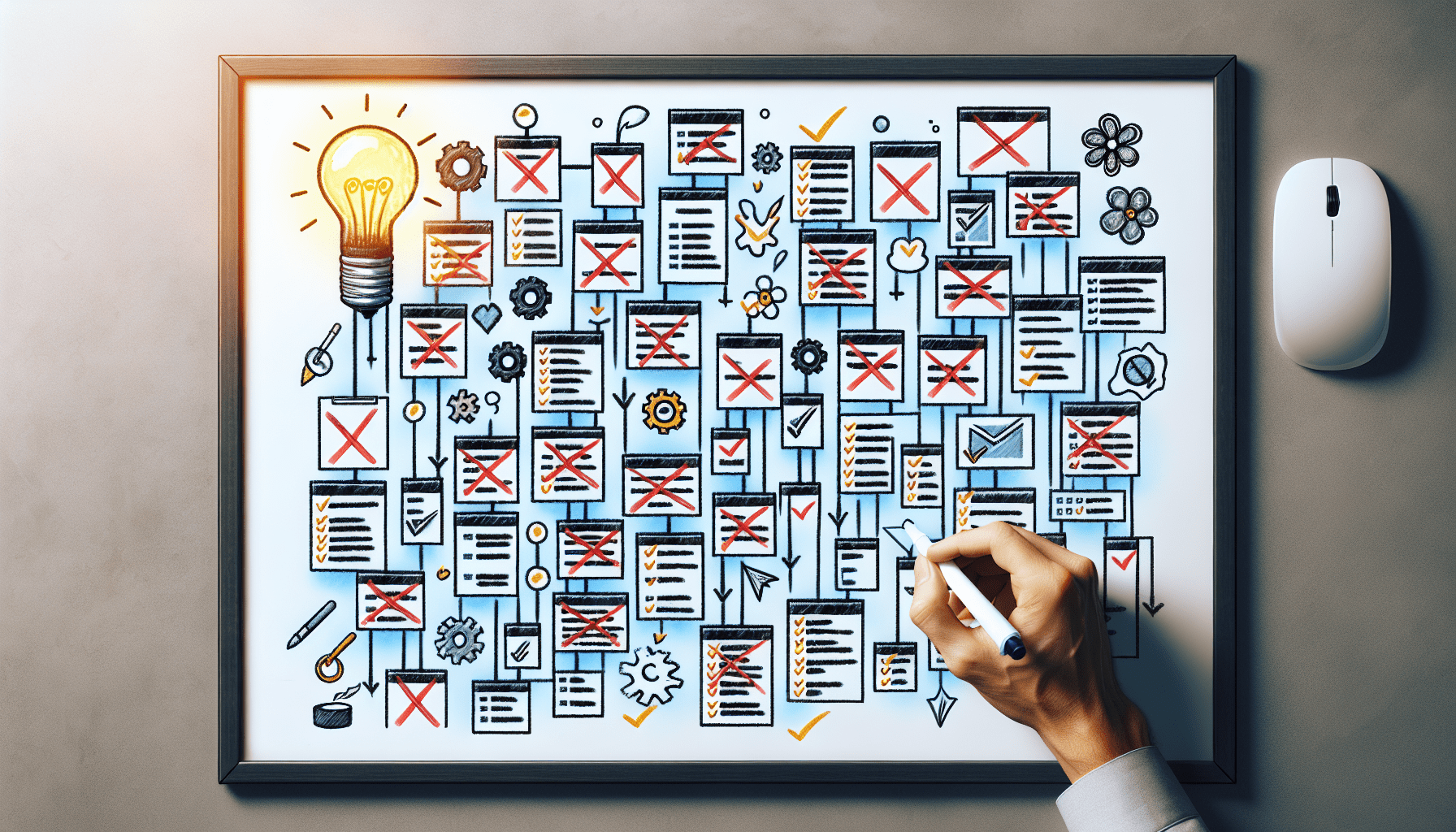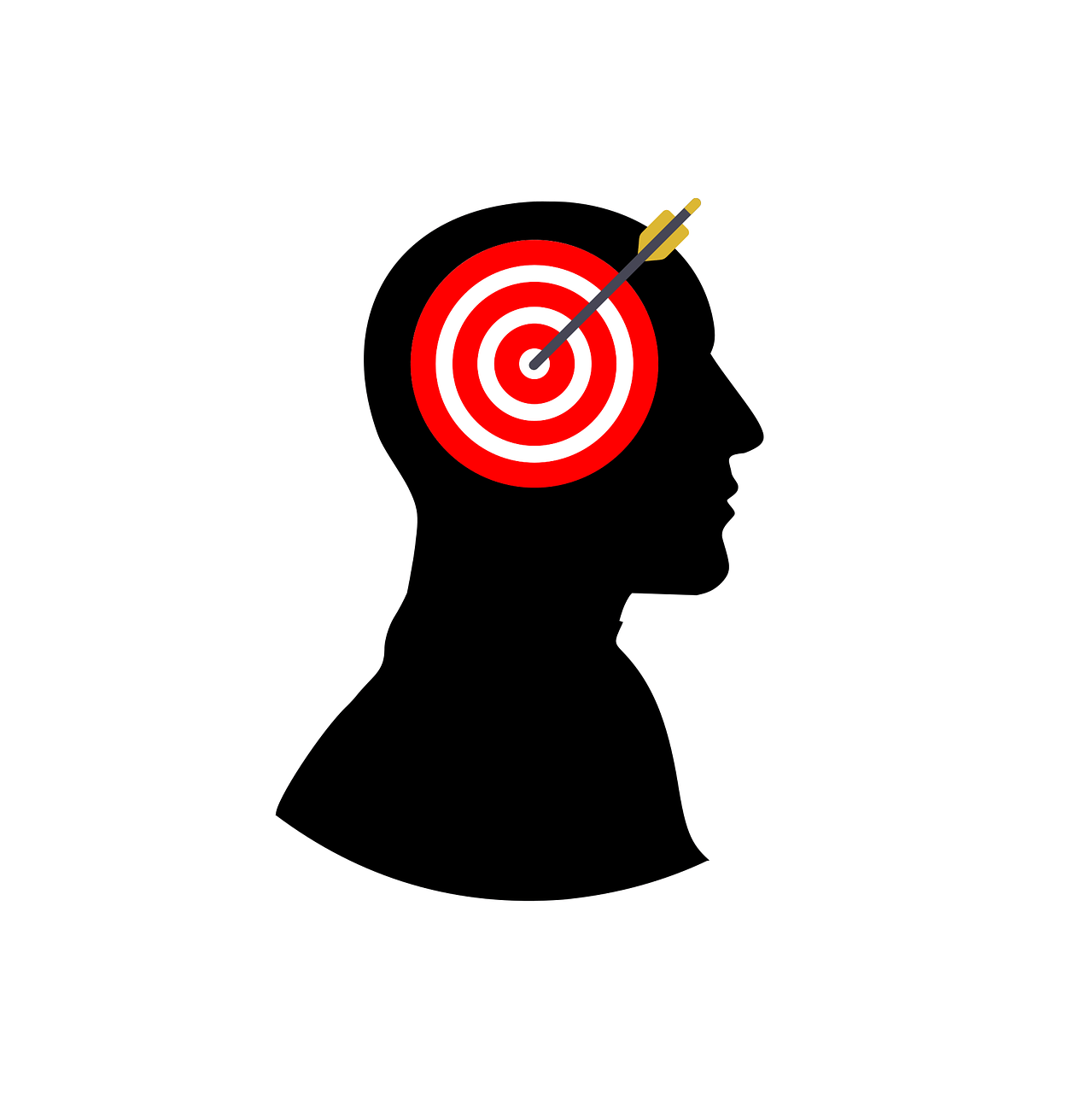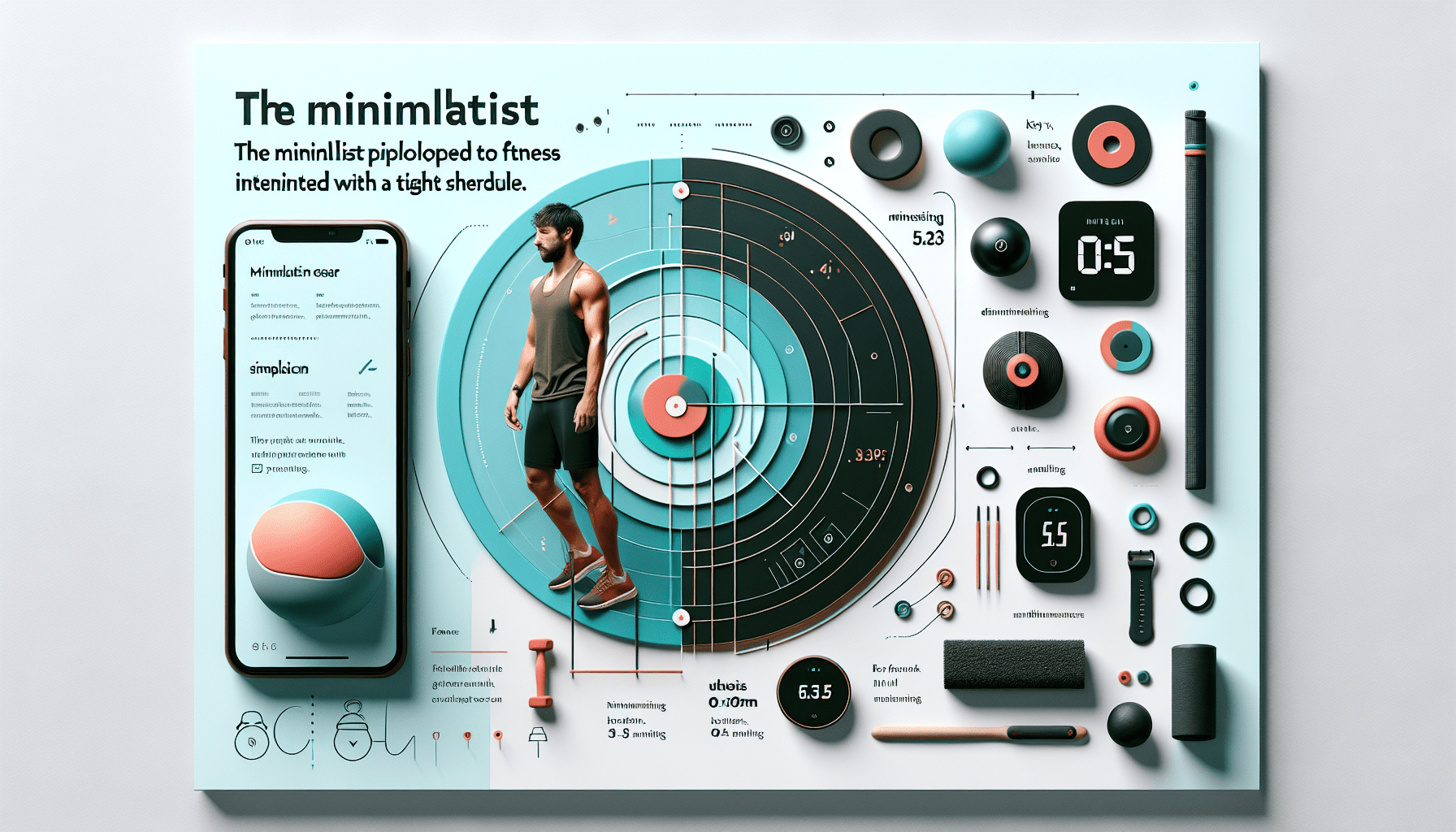
Cut the Clutter: Time Management for the Minimalist

Have you ever thought about how a minimalist lifestyle could change your time management? It’s a big idea that has been around for nearly a decade.
By living minimally, we can make our schedules more efficient and focus on what’s important. This way, we can be more productive and live with purpose.
Picture a life free from clutter, where you use your time, space, and energy wisely. Getting rid of clutter, both physical and mental, can greatly improve your life. You’ll do tasks faster and feel better mentally.
Minimalism is more than just having fewer things. It’s about choosing what’s truly important and making smart decisions. It means saying no to things you don’t need and yes to what matters. This fits well with managing your time well, helping you reach your goals.
Key Takeaways
- The relationship between minimalism and time management spans nearly a decade.
- Minimalist lifestyle encourages eliminating clutter and prioritising significant tasks.
- Decluttering can lead to increased productivity and a serene environment.
- Having less clutter can save time, reduce procrastination, and improve focus.
- Adopting a minimalist mindset can clear mental space and streamline to-do lists.
- Strategically decluttering can even enhance the value and appeal of your home.
- A clutter-free life allows more space for living, playing, and working.
The Intersection of Minimalism and Time Management
Minimalism and time management go hand in hand. By living minimally, we focus on what’s important and streamline our days. This approach helps us use our time better, making us more productive and balanced.
Understanding Minimalism
Minimalism is all about being intentional. It means clearing out the clutter and focusing on what makes us happy. Social Indicators Research shows that minimalists are happier because they value experiences over stuff.
Being a minimalist means choosing what we let into our lives carefully. This can cut stress by 40% and clear our minds, as studies show.
Principles of Effective Time Management
Good time management is about doing what’s important and using our time well. It means putting our energy into things that matter to us. A productivity firm found that minimalists are 20% more productive and 25% better at balancing work and life.
Key time management tips include:
- Prioritising tasks that align with your core values
- Eliminating non-essential activities
- Focusing on quality over quantity in all aspects
These tips match the minimalist way of living, which is all about making choices that matter.
How Minimalism Enhances Time Management
Minimalism makes managing time easier by cutting down on decisions. Journal of Neuroscience research shows that fewer objects mean less mental clutter and more productivity.
A study in the Personality and Social Psychology Bulletin found clutter raises stress by making us anxious. With fewer distractions, we can focus better and use our time wisely.
In short, minimalism helps us focus on what’s important in our daily lives. It leads to better time management and a happier life.
Streamlining Your Schedule for Maximum Efficiency
To make our schedules better, we should adopt a minimalist way of life. This means looking closely at our daily activities to see what helps us be productive and what doesn’t. By using minimalist time management, we can make our schedules more focused and rewarding.
Decluttering Your Calendar
First, we need to clean up our calendars. This means getting rid of tasks that are not needed or don’t add much value. The Bureau of Labor Statistics says 37% of jobs can be done from home, saving us time. By cutting out the daily commute, we can focus on what’s really important. A decluttering schedule helps us stay on track and focus on what matters.
Prioritising Tasks with a Minimalist Approach
Then, we focus on what tasks are most important. The Eisenhower Matrix is a great tool for sorting tasks by urgency and importance. By focusing on tasks that help us reach our goals and letting others go, we work more efficiently. It’s important to keep our schedules clear, making sure each task has a purpose.
Avoiding Overcommitment
It’s also key to know our limits and not take on too much. Overbooking can lead to stress and less productivity. By balancing our schedules with some extra time, we can handle surprises and avoid burnout. Experts say adults need seven to nine hours of sleep to stay productive.
By using a minimalist approach to our schedules, we can focus on what’s important. This makes our daily routines more fulfilling and productive. Here’s a look at some strategies to improve how we manage our time:
| Strategy | Benefits | Challenges |
|---|---|---|
| Decluttering Calendar | Increased focus, time-saving | Requires regular auditing |
| Prioritising Tasks | Improved productivity, goal alignment | Needs discipline to maintain |
| Avoiding Overcommitment | Reduced stress, better time management | Temptation to multitask |
Minimalist Time Management Techniques
In the world of minimalist time management, our time is very valuable. Using certain techniques can greatly improve how efficient and productive we are. We will look at three key methods: time blocking, focus techniques, and batch processing tasks.
Time Blocking
Time blocking is a great way to plan our days. It means setting aside specific times for certain tasks. This helps us avoid distractions and focus on one thing at a time.
For example, using mornings for creative work and afternoons for meetings keeps us productive. This method is based on the ‘rule of three’, used by the US Marine Corps. It shows how focusing on a few tasks at once can be very effective.
Focus Techniques
Using focus techniques like the Pomodoro Technique or mindfulness can really help us concentrate. We work in focused intervals, like 25 minutes of work followed by a break. This helps us stay efficient and avoid getting too tired.
Also, having 20% of our day free for unexpected things helps us keep our productivity up.
Batch Processing Tasks
Batch processing is another way to simplify our tasks. It means doing similar tasks together to reduce the mental effort of switching between them. For example, posting on social media three times a day or spending 10 minutes each morning planning can make our routines smoother.
| Technique | Benefits | Example |
|---|---|---|
| Time Blocking | Minimises distractions, enhances focus, improves efficiency | Morning for creative work, afternoons for meetings |
| Focus Techniques | Boosts concentration, prevents burnout, accommodates disruptions | Pomodoro Technique, leaving 20% of the day unplanned |
| Batch Processing | Reduces mental burden, increases task completion speed | Scheduling social media posts, planning 10 minutes daily |
By using these minimalist time management techniques, we can make our days more efficient and reach our goals better. These methods show us how to work smarter, not harder. They help us use our time in the best way possible.
Creating a Decluttering Schedule
Creating a decluttering schedule is key to managing time well. With over 15 years of experience, we know how vital it is for a simpler life. To live more simply and boost productivity, having a plan is crucial.
Start by focusing on both your physical and digital spaces. Dedicate 10-30 minutes each day to decluttering. This small effort can lead to a big change in your life, giving you more free time later.
Don’t forget about digital clutter, which can slow you down. Things like emails, unnecessary files, and time-wasting activities need attention. A decluttering schedule helps you live more simply, making you more productive and clear-headed.
Here are five steps to follow:
- Identify all areas needing decluttering – physical and digital.
- Set realistic goals and allocate 10-30 minutes daily.
- Prioritise essential tasks and eliminate redundant ones.
- Regularly review and adjust the schedule to maintain efficiency.
- Track progress and celebrate small victories to stay motivated.
Think about a family with eight children and 15 cows to manage. By decluttering their schedules, they can handle their tasks better and live in harmony.
| Step | Description | Outcome |
|---|---|---|
| Identify Areas | Physical and digital spaces | A clear view of required actions |
| Set Goals | Allocate 10-30 minutes daily | Manageable and consistent progress |
| Prioritise Tasks | Eliminate redundant activities | Enhanced productivity |
| Review and Adjust | Regular schedule updates | Continuous improvement |
| Track Progress | Celebrate small victories | Increased motivation |
By taking these steps, we can make a decluttering schedule that simplifies our lives. It also boosts productivity and improves our well-being.
The Role of Environment in Time Optimisation
Our surroundings greatly affect how productive and efficient we are. Keeping our work and home tidy is key to better time management. This helps our mental health and boosts productivity.
Decluttering Your Workspace
Starting with a clean workspace is crucial for productivity. Studies show that using ergonomic furniture reduces pain and boosts job satisfaction. A company that introduced adjustable standing desks saw a 45% jump in energy and focus among employees.
“Maintaining a clean desk in a tech company or startup, where task management tools like Asana, Trello, and Monday.com are prevalent, can streamline your work processes,” the HR manager of a leading tech enterprise states.
Changes in your workspace can greatly improve time management. This is especially true in sales, marketing, and consulting, where hitting targets is key.
Optimising Your Home Environment
Optimising your home environment is just as crucial. It should support your work and not hinder it. Keeping your home at an optimal temperature, with good lighting and ventilation, can reduce discomfort.
These changes make for a better work environment and improve your mental and physical health. Feeling valued and comfortable at work makes employees 12% more productive and 31% more likely to stay.
The Impact of Physical Clutter on Mental Health
Physical clutter affects our mental health, making it hard to focus and increasing stress. A tidy space helps our mental health. Techniques like the Pomodoro Technique or Time Blocking, used in creative fields, keep us focused and stress-free.
Embracing minimalism lets us create spaces that support our work and improve our mental health. This leads to better productivity and time management.
| Industry | Effective Time Management Technique |
|---|---|
| Technology | Task Management Tools (Asana, Trello, Basecamp) |
| Creative Industries | Time Blocking |
| Sales & Marketing | Pomodoro Technique |
| Consulting & Law Firms | Delegation and Prioritising |
| Education | Balancing Multiple Activities Efficiently |
Efficient Time Use: Quality over Quantity
Understanding the importance of focusing on quality tasks is key to using our time well. By choosing quality over quantity, we can focus on tasks that really matter and help us reach our goals.
Emphasising Quality Tasks
Picking quality tasks means spending our time on things that give us a lot back. This is a big part of using time wisely and fits well with living simply. For example, buying top-quality tools means they last longer and need less fixing, saving us time and money.
Research shows we spend 15% less on repairs and replacements with durable items. In our work, like cleaning out emails, we can save a lot of time. By choosing quality, we become more productive.
Eliminating Time Wasters
Getting rid of time wasters is key to using time well. Digital minimalism means cutting down on screen time and decluttering our online spaces. By managing our emails and apps better, we can focus better and use our time well.
Studies show cutting down on smartphone use can save us hours a week. We can use this time for more important things. The “One-In, One-Out Policy” helps keep our stuff in check, stopping clutter from building up. This keeps our space productive.
The Pareto Principle in Minimalism
The Pareto Principle, or the 80/20 rule, fits well with minimalism and using time wisely. It says 20% of our work gives us 80% of the results. By focusing on these key tasks, we use our energy where it counts.
For example, picking the most important tasks and dropping the rest helps us manage our time better. Things like a capsule wardrobe can make our daily routines simpler, saving us up to 17 minutes each morning.
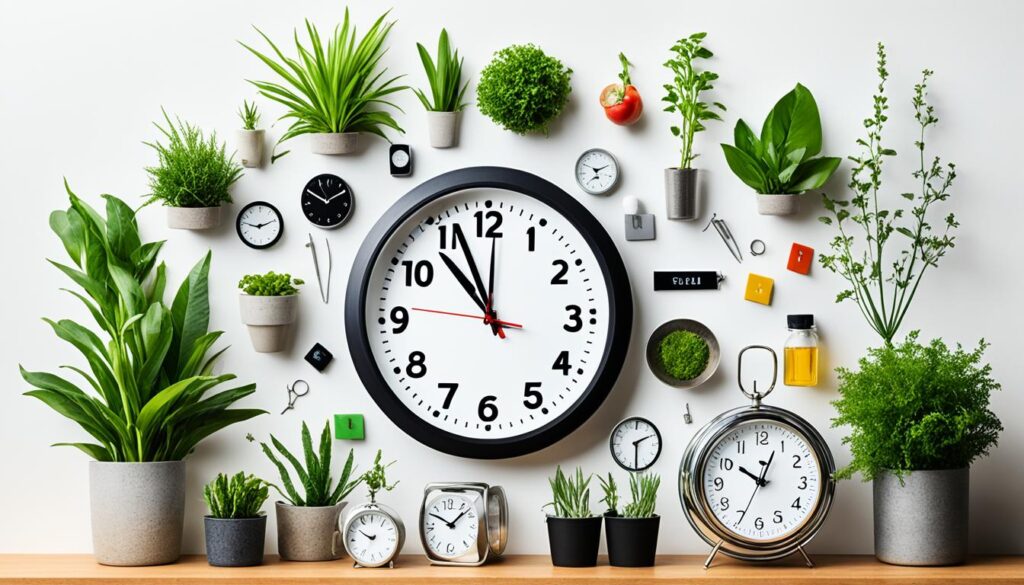
Using the Pareto Principle with minimalism helps us find and do the most important tasks. This makes our efforts impactful and rewarding.
| Strategy | Benefit |
|---|---|
| Streamlined Routines | Enhanced productivity by saving time on maintenance and organising. |
| Decluttered Calendar | Better time management and task completion efficiency. |
| Digital Minimalism | Regained focus and improved time use by limiting screen time. |
| One-In, One-Out Policy | Maintained a balanced, clutter-free environment. |
| Prioritising Quality | Long-term savings, reduced replacements, and streamlined decisions. |
| Evaluation of Commitments | Focussed on tasks that truly matter and improved time management. |
| Email Decluttering | Saved significant time, increase productivity. |
| Capsule Wardrobe | Reduced decision fatigue, saving time every morning. |
Implementing Simplified Time Tracking
To get the most from simplified time tracking, we need to pick the right productivity tools. These tools should be simple, easy to use, and help us track our activities well. They shouldn’t make things more complicated.
Choosing the Right Tools
There are many productivity tools out there for simplified time tracking. It’s important to pick ones that fit well with our work. Tools like Toggl or Harvest are great because they offer both automatic and manual tracking. They give us detailed reports and insights, which are key for adjusting our schedules wisely.
Monitoring and Adjusting Your Schedule
After choosing the right tools, it’s important to keep an eye on our schedule and make changes as needed. Regularly checking the data helps us see how we’re using our time. This lets us adjust our schedule to meet our goals better.
Using time-blocking, where we set aside specific times for tasks, can really increase our productivity. This, along with batch processing tasks, leads to better focus, organisation, and productivity. Having projects and tags in our time tracking system makes everything more efficient and keeps us on track.
Incorporating Productivity Hacks into a Minimalist Lifestyle
Living a minimalist life and using productivity hacks can make us more efficient and fulfilled. We’ll look at three key areas: using technology wisely, practicing mindfulness, and simplifying our daily routines.
Using Technology Wisely
Using technology smartly is key to boosting productivity while keeping a minimalist life. Apps that automate tasks can free us from boring work, saving us time. Tools to block distractions and control screen time help us focus better. Studies show that decluttering our digital space reduces information overload, making us think clearer.
Effective Mindfulness Practices
Adding mindfulness practices to our daily life keeps our minds clear and focused. Activities like meditation and doing one thing at a time boost productivity. In fact, single-tasking can increase productivity by 75%. Minimalists choose quality over quantity, leading to more satisfaction. Research shows minimalism can lower stress and anxiety, making our minds clearer.
Simplified Daily Routines
Having simplified daily routines is key to a productive minimalist life. It means focusing on the essentials and building habits that help us reach our goals. Minimalism helps business owners focus on what’s important. By looking at how we spend our time, we can simplify and become more productive. Cutting down on newsletters and managing social media helps keep our minds clear.
| Aspect | Benefit | Statistic |
|---|---|---|
| Spartan Offices | Increased Productivity | 15% more productive |
| Single-tasking | Enhanced Concentration and Efficiency | 75% productivity increase |
| Digital Decluttering | Clarity of Thought | Information overload reduction |
| Automation | Time Savings | Reduced late fees |
| Intentional Consumption | Greater Satisfaction and Thoughtful Spending | Higher quality life choices |
Streamlined Task Planning for Better Results
Achieving goals starts with streamlined planning. We break our goals into smaller tasks to manage them better. This means setting clear priorities, realistic deadlines, and organising tasks well. By avoiding unnecessary tasks, we make sure every action moves us closer to our goals.
Happy employees are 20% more productive than unhappy ones. Yet, we lose over two hours a day to distractions like social media and emails. Knowing that 20% of our efforts give 80% of results shows the value of focusing on key tasks. The Pomodoro Technique, with 25-minute work sessions and 5-minute breaks, keeps us motivated and focused.
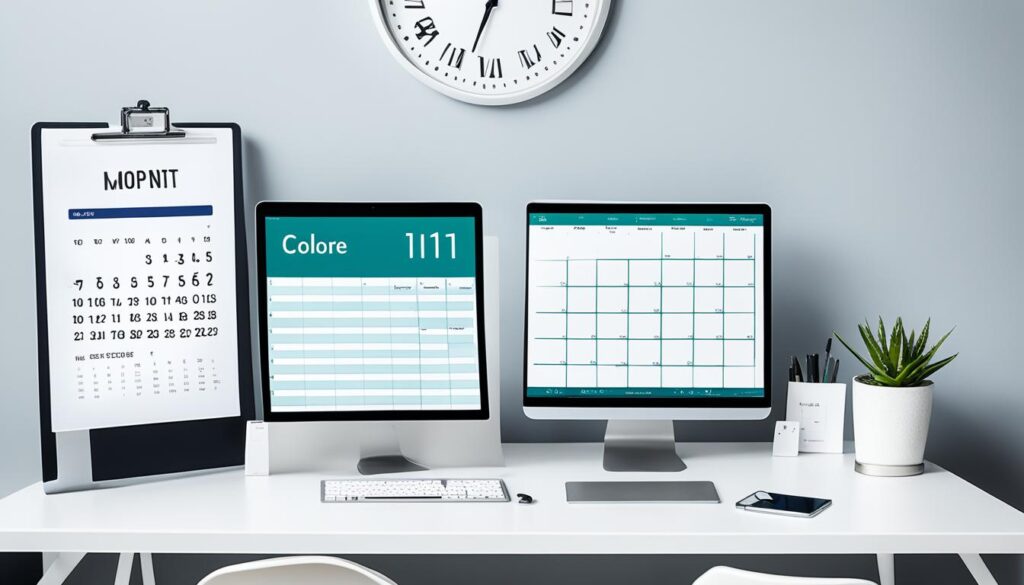
Single-tasking leads to better quality work and quicker completion. Tools like Slack and Asana help track and streamline projects. It’s good to set specific times for different tasks for better task management. The Eisenhower Matrix helps us focus on what’s most important.
It’s also key to take breaks from digital devices and notifications. This boosts focus and productivity when we get back to work.
| Technique | Advantages | Disadvantages |
|---|---|---|
| Pomodoro |
|
|
| Kanban |
|
|
By using these strategies every day, we get better at task management and achieving goals. We work more efficiently and without clutter.
Conclusion
Embracing minimalist time management means living with purpose. Every moment is precious, and every action is thoughtful. We’ve looked at how minimalism and time management can help us take back control of our lives.
This approach boosts our productivity, efficiency, and happiness. It’s not just a way to manage time; it’s a way to live life as we want. By focusing on urgent tasks, we cut down stress and find a better balance between work and personal life.
Studies show that good time management makes us more productive and less stressed. It helps us reach our goals quicker. For example, over 20% of Americans aren’t saving for retirement. But with better time management, this can change.
When we focus on what’s important, we find true success and happiness. By avoiding distractions and sticking to a schedule, we finish tasks faster and concentrate better. Minimalist time management lets us live with purpose, making our daily routines more meaningful. Let’s use these tips to create space, freedom, and alignment in our lives. Let’s truly live life on our terms.

